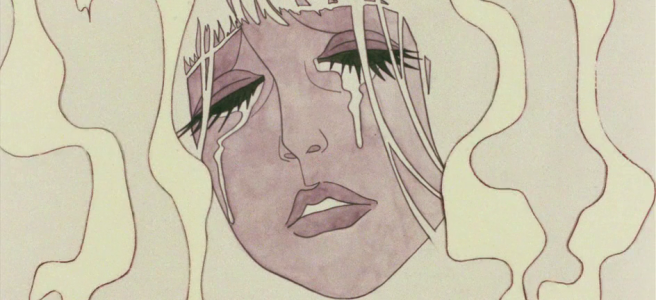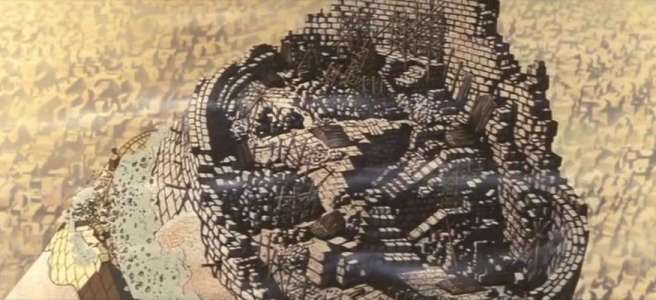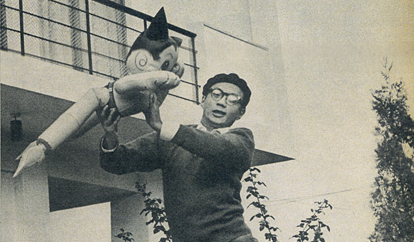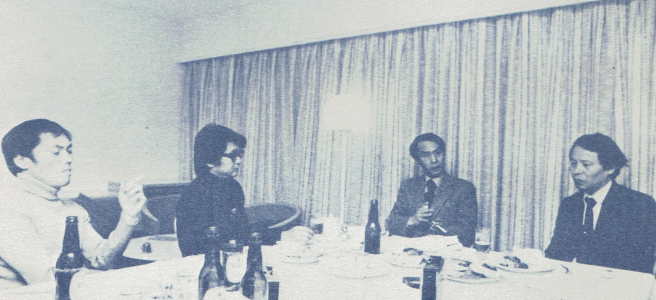Rather than narrate Mushi's supposedly inevitable fall, I'd like to paint a related, but different picture: that of a studio which, by the end of Tezuka's presidency and the entire course of Kawabata's, had lost almost all agency. Between 1970 and 1973, it was completely dependent on other entities - chaotic producer Nishizaki, longtime partner Fuji TV, and the planning company Zuiyo Enterprises. Here, I will focus on the last two. The triangular relationship they formed with Mushi laid the ground for what would become one of anime history's most famous programs - The World Masterpiece Theater.
The History of Mushi Pro – 05 – Farewell to Tezuka (1970-1972)
From a Tezuka-centered perspective, the legacy of the Animerama films is difficult to assess. They were certainly pioneering, but the studio had to pay a heavy toll for that, and the mangaka grew increasingly estranged from his own staff. Things went slowly, but Tezuka gave up on Animerama after Cleopatra and, soon, on Mushi Production as a whole. Tezuka and his studio would go their separate ways: among the symbols of that split was the so-called third Animerama movie, Kanashimi no Belladonna.
Remembering Yoshinori Kanada – Makiko Kanada & Masatsune Noguchi interview
For three years now, I have published something special on every July 21st, “Kanada Day” as I call it, the anniversary of the death of legendary animator Yoshinori Kanada. Since I arrived in Japan last October, I’ve thought of doing something special this year: perhaps meet people who knew Yoshinori Kanada, interview them and obtain … Continue reading Remembering Yoshinori Kanada – Makiko Kanada & Masatsune Noguchi interview
The History of Mushi Pro – 04 – Mushi’s gekiga (1969-1970)
According to Eiichi Yamamoto, the years 1970-1971 represented Mushi Pro’s “second golden age” [1]. There seems to be some truth to this statement: the number of new productions was at its highest, and the quality of some of these is undeniable - Ashita no Joe, in particular, stands as one of the studio’s greatest achievements. However, just as had been the case during the “first” golden age - the time of Jungle Taitei - artistic excellence developed in a context of frustration, hostility and hardships.
The History of Mushi Pro – 3 – The beginning of the end (1967-1969)
With the huge debt left by its former acting director and the end of Mushi’s partnership with NBC Enterprises, the studio found itself in an increasingly difficult financial situation from the second half of 1967 onwards. Things would only get worse from there, and every attempt to resolve them ended in failure as Mushi failed to produce any success. By 1969, the signs were clear: the studio's downward spiral could not be stopped.
The History of Mushi Pro – 02 – Anime business (1965-1966)
While I’m hesitant to speak of “golden ages”, if Mushi Production had one, it was certainly the years 1965-1966. Still riding on Tetsuwan Atom’s prodigious popularity, the studio considerably expanded its personnel and activities. It launched production of new, ambitious TV shows, notably the first color TV anime, Jungle Taitei, and seemed to reach unprecedented artistic heights. But at the same time, the atmosphere at the upper level was getting worse, as Osamu Tezuka started realizing the situation was getting further and further away from what he originally envisioned for Mushi, and the anime industry knew its first deaths. Mushi’s success was not just built on the vision of ambitious and passionate creators, but also on frustrations, failures, and human lives.
The History of Mushi Pro – 1.5 – Atom through its storyboards
In the previous article of this series, I stated that Tetsuwan Atom’s production was “centered on one document, the storyboard”. Although the production pipeline of anime has changed a lot with time, the storyboard’s central place has remained constant. It is, alongside the layout, the lifeline followed by most of the staff, the central document which has to be both adapted and interpreted. It is therefore very important to understand the history of how anime storyboards, or ekonte, appeared, evolved and were used.
The History of Mushi Pro – 01 – The Road to TV Anime (1960-1965)
Osamu Tezuka, the God of Manga, is also the father of modern anime - not only did he coin the word, his Tetsuwan Atom was the first animated TV serial in Japan, and pioneered the “limited animation” techniques still associated with anime. Or so the story goes. In actuality, things are far more nuanced: the goal of this first article is to show that, and narrate the events that led to the completion of Atom in all their complexity. I hope to achieve that in mostly two ways: avoiding teleology - that is, the idea that Tezuka’s goal was to make TV, “limited” animation from the start - and shifting the focus away from Tezuka as an individual.
Anime background art: Takamura Mukuo, Katsumi Handô, Hiroya Yamura, Shûji Konno roundtable – Translation and commentary
A 1981 roundtable focusing on anime background art, featuring Takamura Mukuo and his colleagues Katsumi Handô, Hiroya Yamura and Shûji Konno. Followed by a commentary on the sociology of background artists and the changing roles of anime background art through time.
The Weathering Continent staff interviews – Translation
A series of interviews on the 1992 movie The Weathering Continent, featuring character designers Mutsumi Inomata and Nobuteru Yûki, director Kôichi Mashimo, animation director Kazuchika Kise and art director Shûichi Hirata









